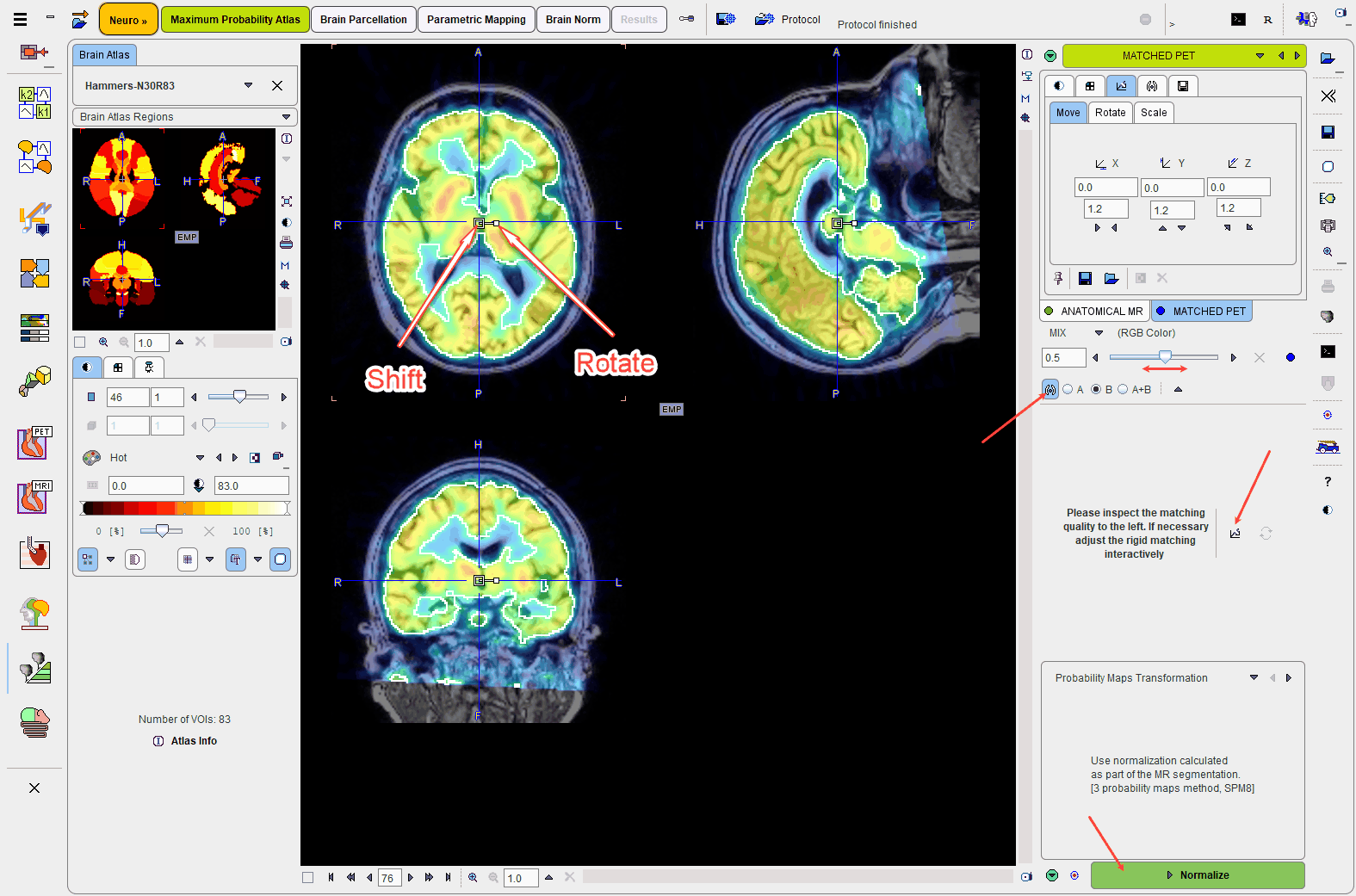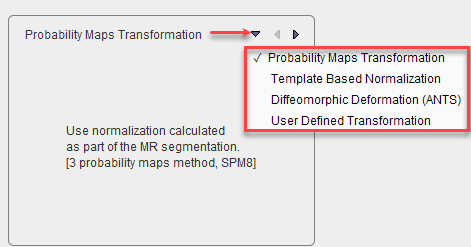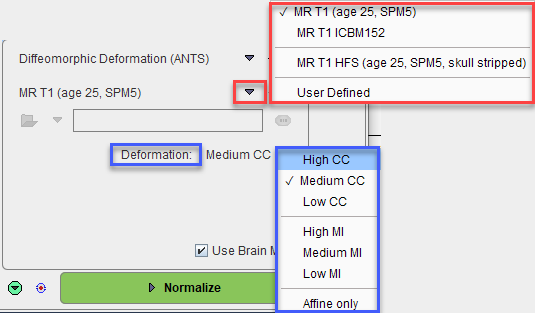The result of matching is shown on the MATCHED PET page. Please verify that matching was successful by evaluating the alignment in different parts of the brain. Particularly helpful to do so is to interactively drag the fusion balance left/right, and to enable contour outlines.

If the match is not satisfactory, there are two options to rectify the situation:
1.Return to the previous page, change the sampling and smoothing parameters and try the automatic matching again, or
2.Activate the Adjust matching button and shift/rotate the PET image interactively by dragging the handles in the image or entering offsets/angles on the Move/Rotate tabs. Finally the transformation needs to by applied with the ![]() button.
button.
Normalization
The next step is to spatially normalize the subject images. There are four options as illustrated below.

Probability Maps Transformation |
Uses the normalization resulting from the GM/WM/CSF MR segmentation procedure. |
Template Based Normalization |
Performs an SPM5-type normalization between the subject MR and the T1 atlas template image with the usual options |
Diffeomorphic Deformation (ANTS) |
Implements the Advance Normalization Tools in the PNEURO work flow. Please note, that this method is much slower than the SPM based elastic mapping or probability maps transformation. It will depend on the image, whether the improved accuracy is worth the long waiting times. First, select the atlas template which is most similar to the analyzed image. The User Defined entry allows an arbitrary file to be defined as normalization template, which naturally needs to fit the atlas anatomy. Various Deformation options are available for selection as illustrated below:
After selection, when hoovering with the mouse cursor above the selection, a tool tip will be displayed, indicating the Deformation method (cross correlation=CC, mutual information=MI or Affine only) and the parameters that are going to be used for the matching procedure. Please note that this parameters cannot be modified. The High deformation methods are the most time consuming calculations as they represent the most accurate ones. The calculation time is shorter for the Medium and Low deformation methods. |
User Defined Transformation |
For loading and applying a normalization transformation which has previously been calculated for the MR image and saved. |
Please activate the Normalize action button to proceed.

